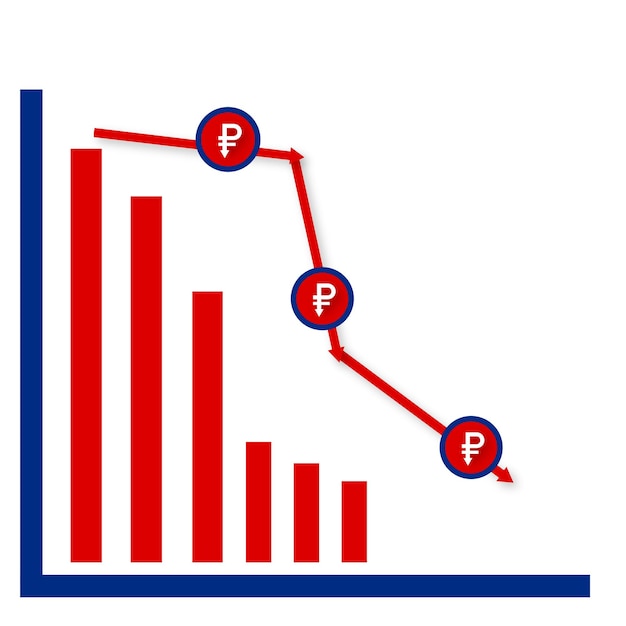Capital Gains Tax 2025: Investor’s Guide to Proposed Rate Changes

Anúncios
Understanding the proposed changes to capital gains tax rates in 2025 is crucial for investors to strategically plan their investment portfolios and minimize potential tax liabilities, ensuring they are well-prepared for the upcoming fiscal adjustments.
Navigating the complexities of investment taxation can be daunting. This article breaks down understanding the proposed changes to capital gains tax rates in 2025: a guide for investors, empowering you to make informed decisions about your financial future.
Understanding Capital Gains Tax: A Quick Overview
Capital gains tax is a levy on the profit you make when you sell an asset, such as stocks, bonds, or real estate, for more than you originally paid for it. These gains are taxed differently depending on how long you held the asset before selling it.
The duration you hold an asset determines whether the gain is classified as short-term or long-term, each subject to different tax rates.
Short-Term vs. Long-Term Capital Gains
The distinction between short-term and long-term capital gains is primarily based on the holding period of the asset. This classification significantly impacts the applicable tax rates.
- Short-Term Capital Gains: These result from selling assets held for one year or less. They are taxed at your ordinary income tax rate, which can be as high as 37% depending on your income bracket.
- Long-Term Capital Gains: These result from selling assets held for more than one year. They are generally taxed at lower rates than ordinary income, with rates of 0%, 15%, or 20% depending on your taxable income.
Understanding the nuances between short-term and long-term capital gains is essential for effective tax planning and investment strategies. It enables investors to strategically manage their assets to optimize tax efficiency.

In conclusion, the capital gains tax is a critical consideration for investors, and grasping the difference between short-term and long-term gains is vital for tax optimization.
Current Capital Gains Tax Rates in the US
The current capital gains tax rates in the United States are structured to favor long-term investments. These rates are generally lower than ordinary income tax rates, encouraging investors to hold assets for longer periods.
These rates are determined by income thresholds, ensuring that those with higher incomes pay a larger percentage of their capital gains in taxes.
Income Thresholds for 2024
For the 2024 tax year, the long-term capital gains tax rates are divided into three primary brackets based on taxable income:
- 0% Rate: This applies to individuals with taxable incomes up to $47,025, married couples filing jointly with incomes up to $89,250, and heads of households with incomes up to $63,000.
- 15% Rate: This applies to individuals with taxable incomes between $47,026 and $518,900, married couples filing jointly with incomes between $89,251 and $583,750, and heads of households with incomes between $63,001 and $548,800.
- 20% Rate: This applies to individuals with taxable incomes above $518,900, married couples filing jointly with incomes above $583,750, and heads of households with incomes above $548,800.
Additionally, it’s important to remember the Net Investment Income Tax (NIIT) of 3.8%, which applies to taxpayers with higher incomes, potentially increasing the total capital gains tax rate. This tax is applied to investment income, including capital gains, for those with adjusted gross incomes (AGI) exceeding $200,000 for single filers and $250,000 for married couples filing jointly.
Understanding these income thresholds is crucial for investors as they plan their investment strategies and estimate their potential tax liabilities. This knowledge enables them to make informed decisions about when and how to realize capital gains.
Overview of Proposed Changes for 2025
As we approach 2025, significant discussions are underway regarding potential changes to capital gains tax rates. These proposed changes stem from evolving economic policies and governmental priorities.
The potential adjustments to these rates could have substantial implications for investors and the broader financial market.
Key Proposals on the Table
Several key proposals are being considered that could reshape the landscape of capital gains taxation:
- Increased Top Tax Rate: One proposal suggests raising the top long-term capital gains tax rate from 20% to as high as 39.6%, aligning it with the top ordinary income tax rate. This change would primarily affect high-income earners.
- Taxing Capital Gains at Death: Another proposal involves taxing capital gains at the time of inheritance, which is a significant departure from current practices where inherited assets receive a step-up in basis (fair market value at the time of inheritance).
- Eliminating the Step-Up in Basis: This proposal would eliminate the step-up in basis for inherited assets, meaning that heirs would be responsible for capital gains taxes on the difference between the original purchase price and the asset’s value when they inherit it.
These proposed changes aim to generate additional tax revenue and address wealth inequality. However, they also raise concerns about potential impacts on investment behavior and the overall economy. Close monitoring of these developments is essential for investors to prepare for possible tax implications.
Potential Impact on Investors
The proposed changes to capital gains tax rates in 2025 could significantly impact investment strategies and returns for a wide range of investors. Understanding these potential impacts is crucial for making informed financial decisions.
From individual investors to large institutional players, the implications could be far-reaching.
How Different Investors Could Be Affected
The proposed changes could affect various types of investors differently:
- High-Income Earners: These investors may face significantly higher tax liabilities on their capital gains, potentially reducing their after-tax investment returns. They might seek tax-advantaged investment strategies or consider shifting investments to lower-taxed assets.
- Small Investors: While the changes might not directly affect those in lower tax brackets, the broader economic impacts could still influence their investment portfolios. They may need to re-evaluate their asset allocations and investment timelines.
- Retirees: Many retirees rely on investment income to supplement their retirement funds. Higher capital gains taxes could reduce their available income, potentially requiring adjustments to their spending habits or investment withdrawals.

In order to mitigate potential tax impacts, investors should consider:
- Tax-Loss Harvesting: Selling losing investments to offset capital gains.
- Holding Assets Longer: To qualify for potentially lower long-term capital gains rates (if applicable).
- Diversifying Investments: To spread risk and potentially reduce overall tax liability.
In summary, the proposed capital gains tax changes could have a wide-ranging impact on investors, underscoring the importance of being informed and proactive in financial planning.
Strategies for Adapting to the Changes
Adapting to potential changes in capital gains tax rates requires a proactive and informed approach. Implementing effective strategies can help investors minimize their tax liabilities and optimize their investment returns.
These strategies range from adjusting investment timelines to exploring tax-advantaged accounts.
Effective Strategies for Investors
Here are several strategies that investors can consider to adapt to the proposed tax changes:
- Tax-Advantaged Accounts: Utilizing accounts such as 401(k)s, IRAs, and Roth IRAs can provide significant tax benefits. Contributions to traditional 401(k)s and IRAs are often tax-deductible, while Roth accounts allow for tax-free withdrawals in retirement.
- Tax-Loss Harvesting: This involves selling investments that have decreased in value to offset capital gains. By strategically realizing losses, investors can reduce their overall tax liability.
- Asset Allocation: Re-evaluating asset allocation to include more tax-efficient investments can also be beneficial. For example, investing in municipal bonds, which are typically exempt from federal income tax, can help reduce tax exposure.
In addition to these strategies, consulting with a financial advisor or tax professional is highly recommended. These experts can provide personalized advice based on individual financial situations and help investors develop a comprehensive plan to navigate the changing tax landscape.
Being proactive and informed is essential for investors looking to adapt to the proposed capital gains tax changes. By implementing effective strategies and seeking professional advice, investors can mitigate potential tax impacts and optimize their financial outcomes.
Seeking Professional Advice
Navigating the complexities of capital gains tax and adapting to potential changes can be challenging. Seeking professional advice from financial advisors or tax professionals can provide valuable insights and guidance.
These experts can help investors develop personalized strategies tailored to their specific financial situations.
Benefits of Consulting a Financial Advisor
Consulting with a financial advisor offers numerous benefits:
- Personalized Advice: Financial advisors can assess your unique financial situation, goals, and risk tolerance to provide tailored recommendations.
- Tax Planning: They can help you develop tax-efficient investment strategies to minimize your tax liabilities and maximize your returns.
- Investment Management: Financial advisors can assist with asset allocation, portfolio diversification, and ongoing investment management.
When selecting a financial advisor, it’s essential to look for someone with the appropriate credentials, experience, and a strong understanding of tax laws. Certified Financial Planners (CFPs) and Chartered Financial Analysts (CFAs) are examples of qualified professionals who can provide expert guidance.
In conclusion, seeking professional advice is a prudent step for investors looking to navigate the complexities of capital gains tax and adapt to potential changes. The expertise and guidance of financial advisors and tax professionals can help investors make informed decisions and achieve their financial goals.
| Key Point | Brief Description |
|---|---|
| 💰 Capital Gains Tax | Tax on profit from selling assets. |
| ⏳ Holding Period Matters | Short-term (≤1 year) vs. long-term (>1 year) gains have different rates. |
| 📊 Income Thresholds | Tax rates vary based on income brackets (0%, 15%, 20%). |
| 🔮 2025 Changes | Potential rate increases, changes in taxing inheritances. |
FAQ
▼
The capital gains tax is a tax on the profit you make from selling an asset, such as stocks, bonds, or real estate, for more than you originally paid for it. It only applies when the asset is sold.
▼
Long-term capital gains, from assets held over a year, are taxed at 0%, 15%, or 20% depending on your income. Higher incomes face a 20% rate, while lower incomes might qualify for 0%.
▼
Proposed changes include potentially raising the top rate to 39.6%, taxing gains at death, and eliminating the step-up in basis for inherited assets. These are subject to legislative changes.
▼
Tax-loss harvesting involves selling investments that have decreased in value to offset capital gains. This strategy can help reduce your overall tax liability by balancing gains and losses.
▼
A financial advisor can provide personalized advice, help develop tax-efficient strategies, and assist with managing your investments. They can ensure your portfolio aligns with your goals and tax situation.
Conclusion
Understanding the proposed changes to capital gains tax rates in 2025: a guide for investors is a process that requires staying informed and proactive. By keeping abreast of potential changes, consulting with professionals, and implementing appropriate strategies, investors can navigate the future tax landscape effectively.